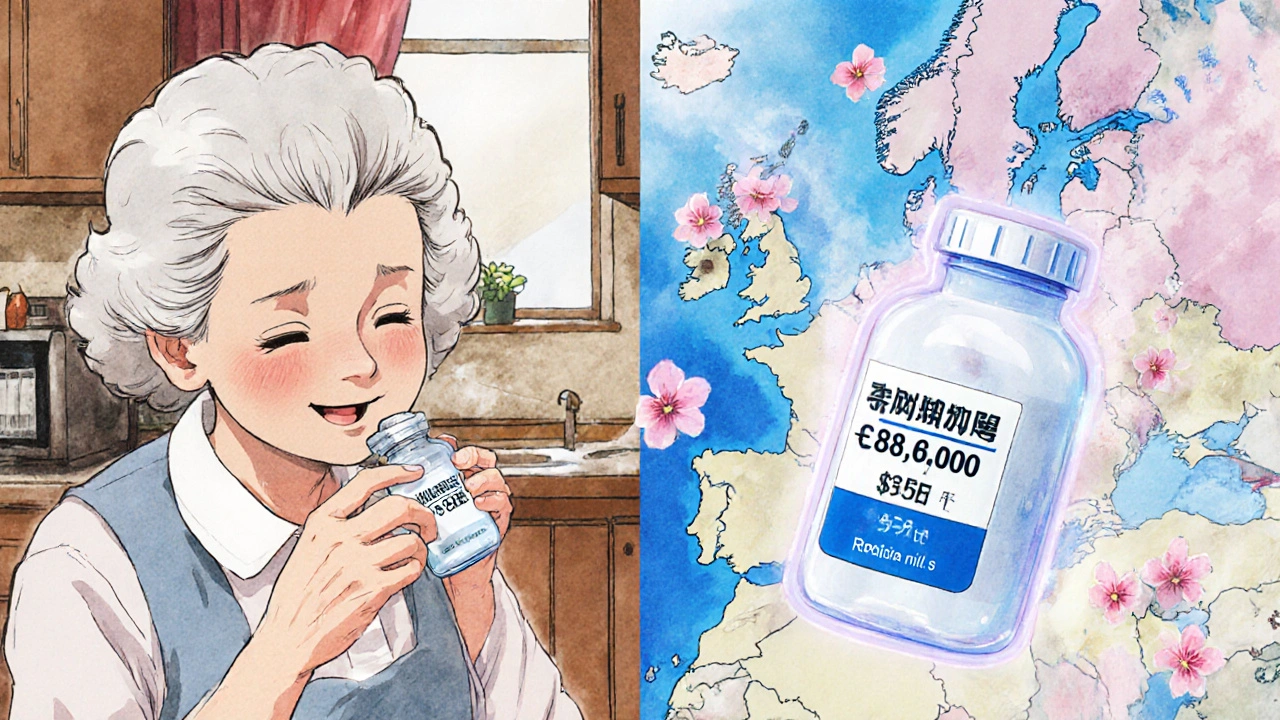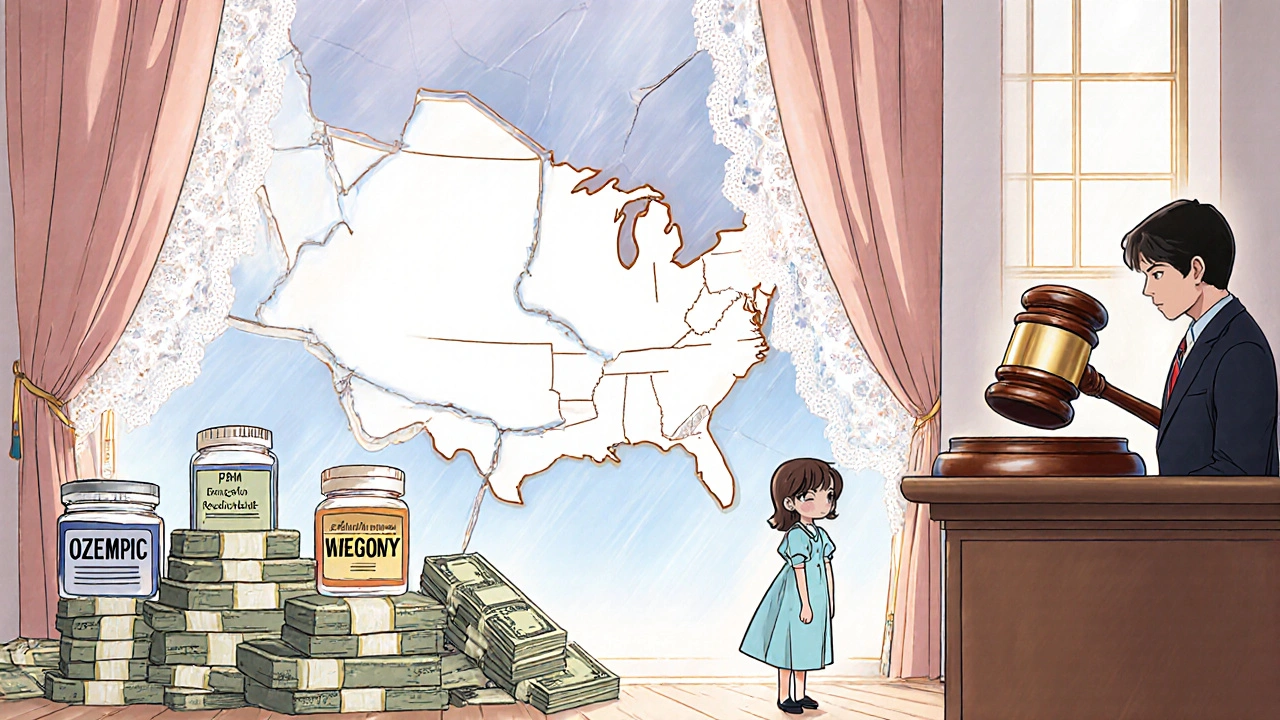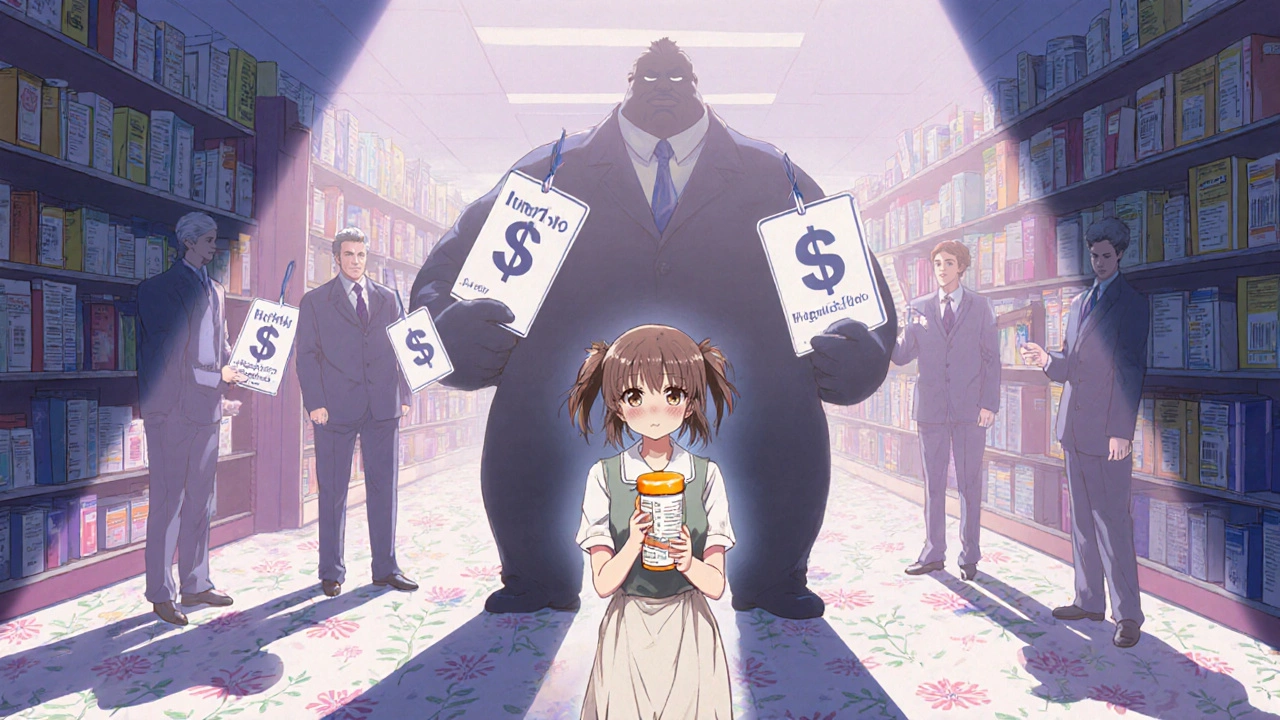Americans pay three times more for the same prescription drugs than people in Canada, Germany, or the UK. It doesn’t matter if the pill was made in the same factory, using the same ingredients, or shipped from the same warehouse. You still pay far more. Why?
The System Was Built to Let Drug Companies Set Any Price
In most countries, the government steps in to negotiate drug prices. In the U.S., that’s not allowed - at least not for most drugs. The Medicare Modernization Act of 2003 made it illegal for Medicare to negotiate prices directly with pharmaceutical companies. That rule stayed in place for over 20 years. It meant that when a new drug came out - say, a $100,000-a-year treatment for a rare disease - Medicare had no power to say, "No, that’s too much. We’ll pay $20,000." That’s not the case anywhere else in the developed world. Countries like the UK, France, and Australia use reference pricing. They look at what other nations pay and set their own prices accordingly. The U.S. doesn’t. Instead, drugmakers set their own prices, and the market - fragmented and confusing - tries to catch up.Who’s Really in Charge? The Middlemen
You might think the price you pay at the pharmacy is set by the drug company. It’s not. The list price you see is just the starting point. Behind the scenes, Pharmacy Benefit Managers (PBMs) - giant middlemen that handle drug benefits for insurers - negotiate rebates with manufacturers. But here’s the twist: PBMs often get paid more when the list price is higher. Why? Because their rebates are a percentage of that list price. So if a drug costs $1,000 a month, the PBM might get a 20% rebate - $200. If the company hikes the price to $1,500, the PBM gets $300. The patient still pays the same copay, maybe $30. The insurer pays more. The PBM pockets more. The drugmaker gets more. And the patient? They’re stuck with the same out-of-pocket cost, even as the real cost of the drug soars. This isn’t a bug. It’s the design. PBMs were supposed to save money. Instead, they’ve become profit centers that benefit from higher prices. A 2025 analysis by Morgan Lewis found that PBMs now control nearly 80% of the U.S. pharmacy market. That kind of power means they can demand higher rebates - and manufacturers respond by raising list prices to keep up.Specialty Drugs Are Breaking the Bank
Not all drugs are created equal. The most expensive ones aren’t your daily blood pressure pill. They’re the new treatments for diabetes, obesity, cancer, and rare diseases. These are called specialty drugs. They’re complex to make, often biologics, and sometimes the only option for patients. Take Ozempic or Wegovy - drugs that help manage weight and blood sugar. In 2025, the list price was over $1,000 a month. After a White House deal, it dropped to $350. That sounds like progress. But here’s the catch: that $350 is still 25 times what it costs in Germany. And that’s only for the 10 drugs Medicare is now allowed to negotiate. There are thousands more. IQVIA reported in 2025 that specialty drugs drove 90% of the 11.4% increase in U.S. drug spending. These drugs aren’t just expensive - they’re growing fast. More patients are using them. More insurers are covering them. And manufacturers keep raising prices because they can.
Why the U.S. Pays 75% of Global Drug Profits
The U.S. has less than 5% of the world’s population. Yet, according to the White House, Americans pay for 75% of the global profits made by pharmaceutical companies. That’s not because we use more drugs. It’s because we pay more for them. A single pill for Wilson’s disease, called Galzin, costs $88,800 a year in the U.S. In the UK, it’s $1,400. In Germany, $2,800. That’s not inflation. That’s not research costs. That’s pricing power. The same pill. Same factory. Same chemistry. Different price tag. Drugmakers argue they need high prices to fund research. But the data doesn’t support that as the main reason. In 2024, the top 10 U.S. drug companies spent $68 billion on marketing and advertising - more than they spent on research and development. They spent $100 billion on stock buybacks and dividends - money that went to shareholders, not labs.The Inflation Reduction Act - Real Change or Just a Band-Aid?
In 2022, Congress passed the Inflation Reduction Act. It was the first real attempt in decades to rein in drug prices. Starting in 2026, Medicare can negotiate prices for 10 drugs. In 2025, it began requiring drugmakers to pay rebates if they raise prices faster than inflation. That’s led to savings. For 64 drugs, Medicare beneficiaries paid less in early 2025. The annual out-of-pocket cap for Medicare Part D dropped to $2,000 - a life-changing shift for people who were rationing insulin or skipping doses to save money. But here’s the problem: the 2025 budget bill weakened the program. It delayed negotiations. It limited the number of drugs that can be negotiated. And it didn’t touch the private insurance market. So while Medicare patients got some relief, millions of others - those with private plans or no insurance - saw no change. And the drug companies? They didn’t stop raising prices. Senator Bernie Sanders’ September 2025 report found that 688 drugs went up in price after President Trump promised to lower costs. Even after the White House announced deals on Ozempic and Wegovy, 87 other drugs jumped in price by an average of 8%.


I just got my insulin copay cut to $35 this month and I swear I cried in the pharmacy. My mom used to skip doses to make it last. This isn't just policy-it’s survival. Thank god for the IRA, even if it’s small.
It’s fascinating how the entire structure is engineered to obscure accountability-drugmakers set the list price, PBMs profit off that list price, insurers get billed, patients pay fixed copays, and no one’s really incentivized to lower the actual cost. It’s like a Rube Goldberg machine designed by corporate lawyers, where every gear spins to make someone richer while the patient just gets more exhausted. And the worst part? We’ve normalized it. We don’t even flinch anymore when a pill costs more than a used car.
This is what happens when you abandon fiscal responsibility and embrace socialist price controls disguised as reform. Other nations don’t have innovation because they steal our research and then cap prices. We fund the future. They free-ride. It’s simple.
Let me guess-the same people who scream about ‘big pharma’ are the ones who voted for politicians who took millions in campaign cash from PBMs. Wake up. This isn’t a conspiracy. It’s capitalism with lobbyists.
I’ve been on a specialty drug for three years. My copay hasn’t changed, but the list price has tripled. My insurance company sends me a new explanation of benefits every month, and I just stare at it. I don’t understand any of it. I just know I’m still paying $40. I’m grateful for that. But I can’t help wondering how many others are getting gouged and don’t even know why. It feels like being in a room where everyone’s speaking a language you don’t know, but you’re still expected to pay the bill.
Drug companies: ‘We need high prices for R&D!’
Also drug companies: *spends $68B on ads and $100B on buybacks*
Me: 🤡
Just saw a post from a guy in Canada saying he pays $12 for the same Ozempic pen. I’m not mad… I’m just disappointed. We’re the richest country on earth and we let this happen. We could fix this. We just don’t want to. 😔
Did you know the WHO is secretly controlled by Big Pharma? They push these ‘reference pricing’ lies so the U.S. gets blamed while they funnel profits to global elites. The IRA? A distraction. The real goal is to replace our system with UN-run healthcare. Read Project 2025-they’re trying to protect us from this.
The pharmaceutical industry is the new cathedral-and the altar is lined with insulin vials and Medicare forms. We worship at the shrine of shareholder value, where the sacrament is a pill priced in five figures and the priest is a PBM executive in a tailored suit. The faithful don’t question the ritual-because they’re too busy wondering if they’ll live to see next month’s refill. We’ve turned healing into a derivative.
In India, we pay $5 for the same generic version of that Wilson’s disease drug. The government negotiates. No middlemen. No hype. Just access. I don’t judge your system-I just wish yours could learn from ours.
There’s a quiet violence in the way we treat illness as a market segment. We don’t just price drugs-we price hope. We price dignity. We price the silence between a parent’s breaths when they’re wondering if they can afford to keep their child alive another month. And we call it ‘the free market.’ But freedom isn’t the ability to charge what you want-it’s the right to live without having to beg for it. The system doesn’t fail because it’s broken. It fails because it was built to fail us.